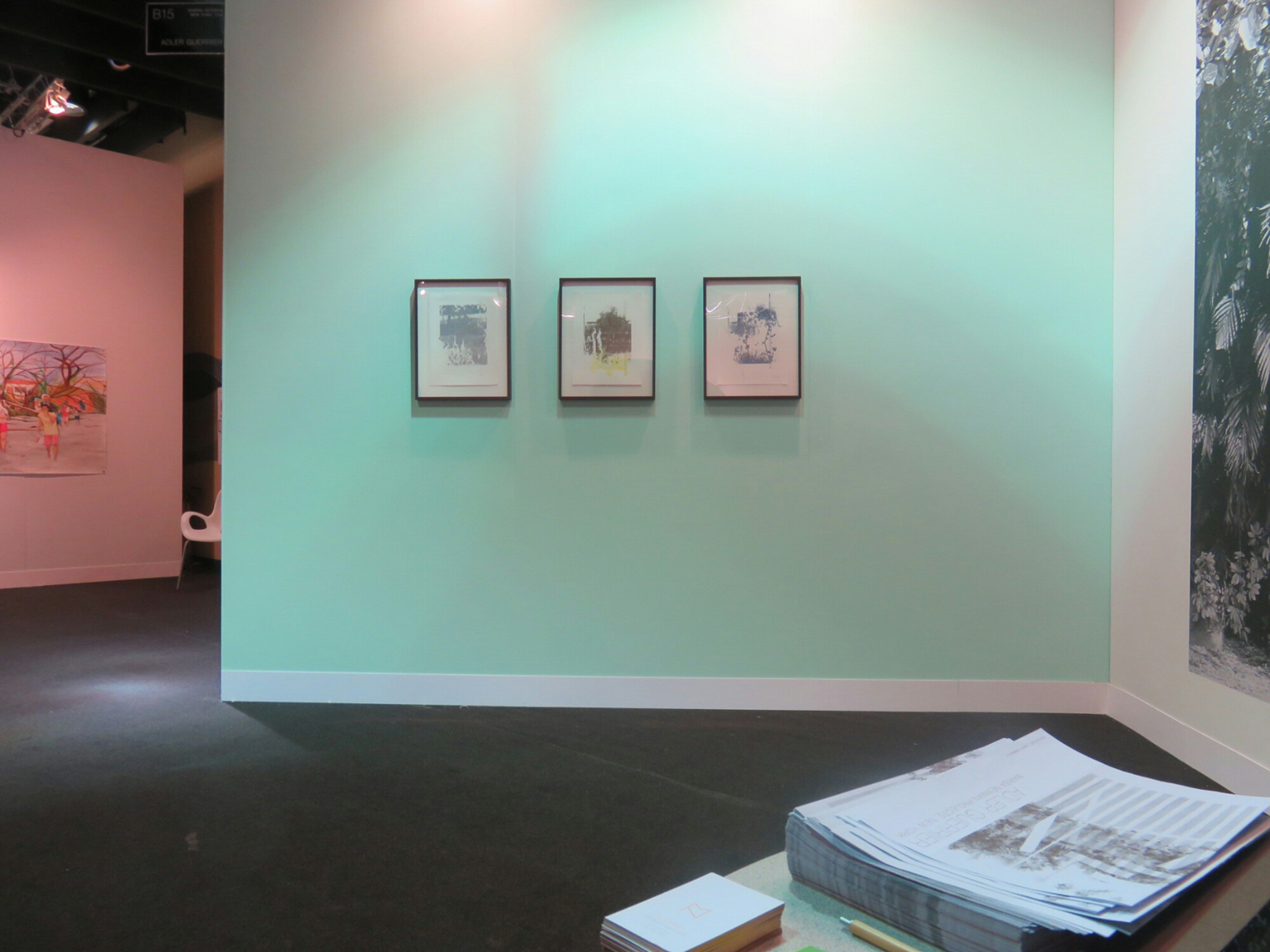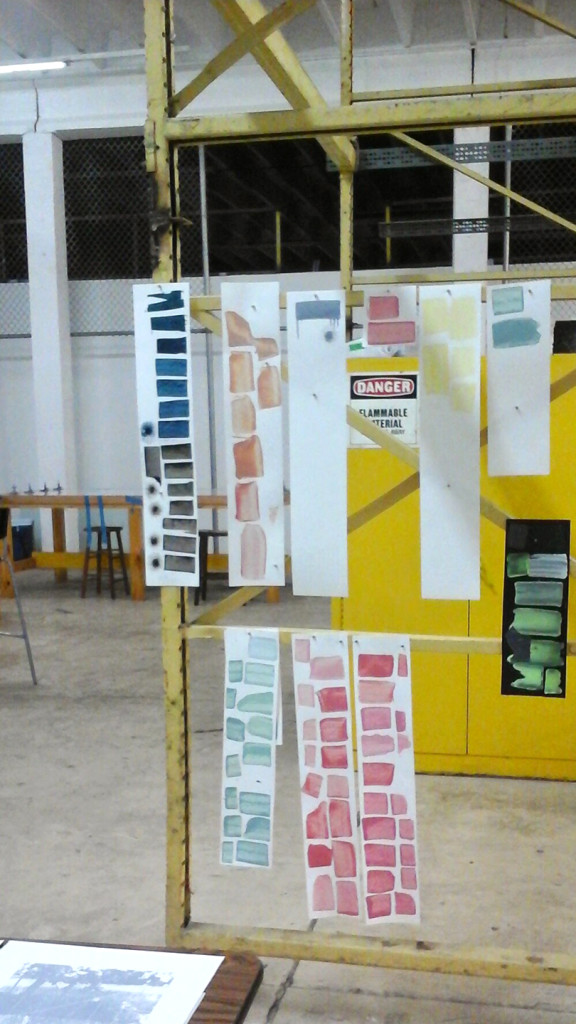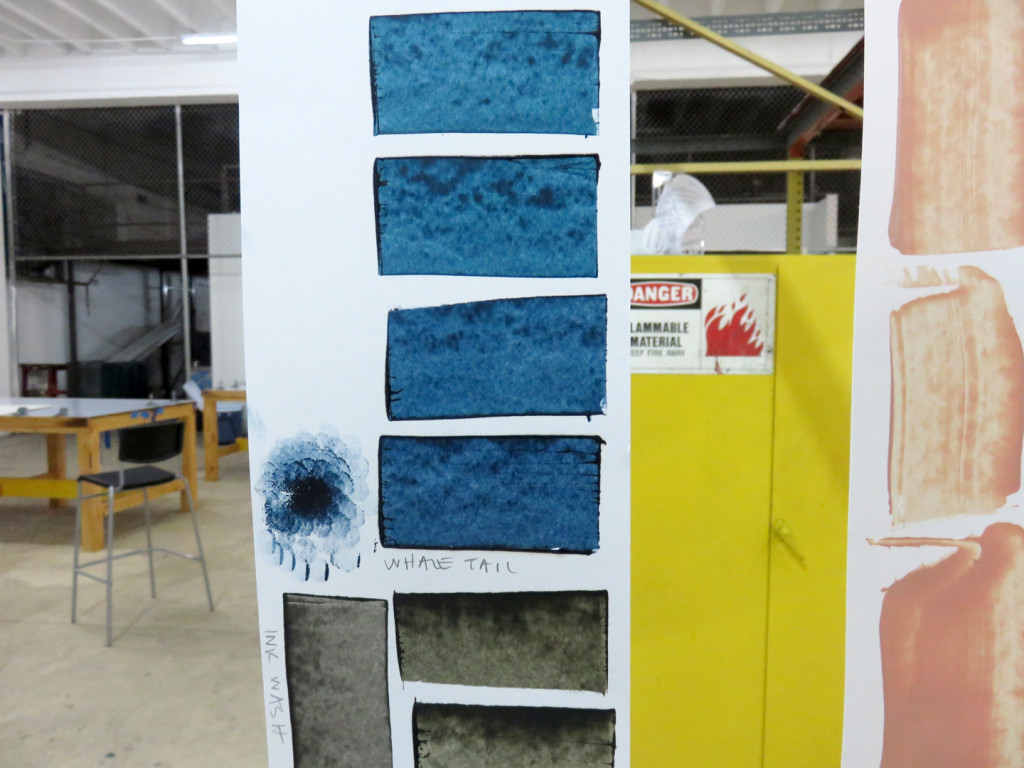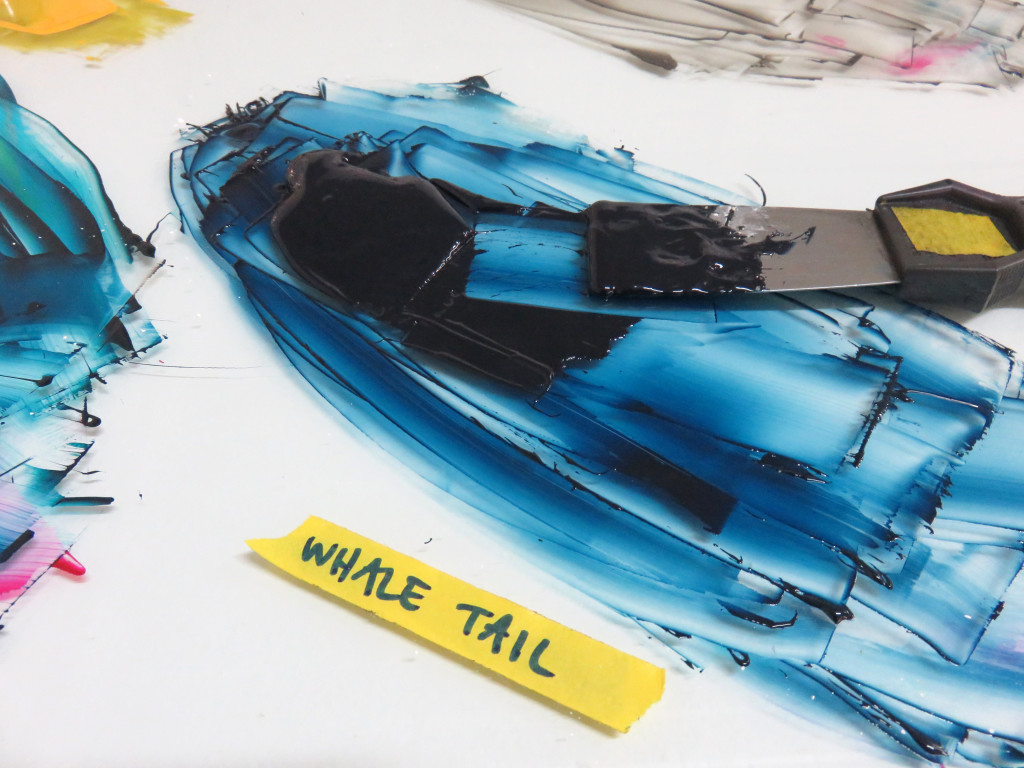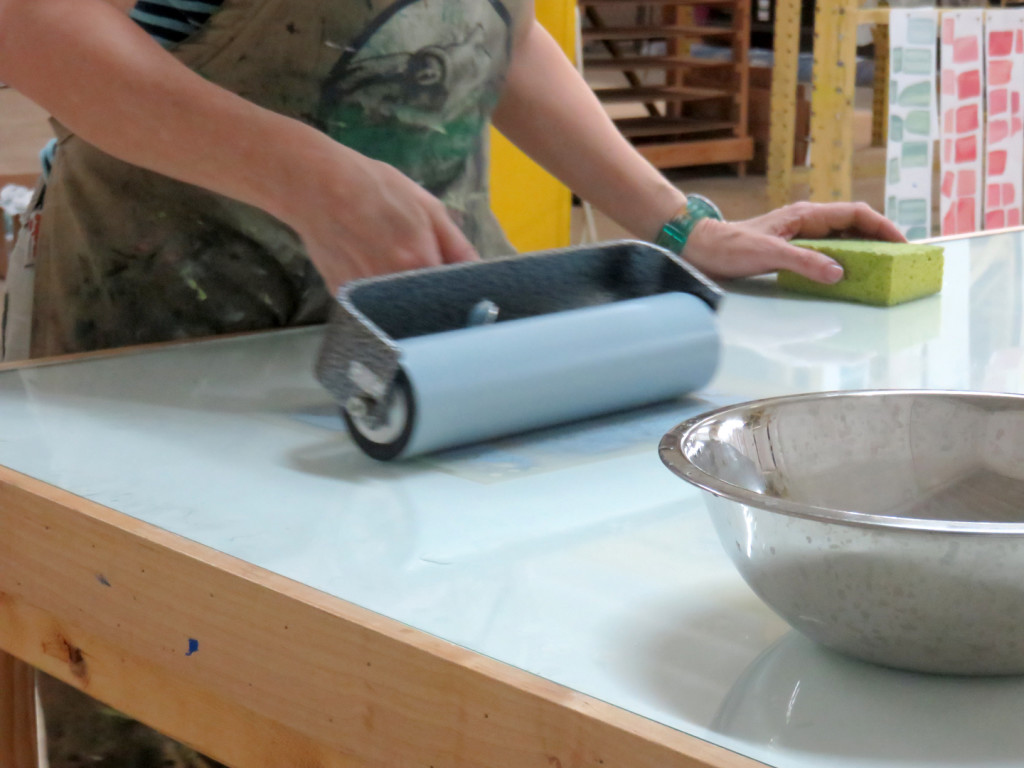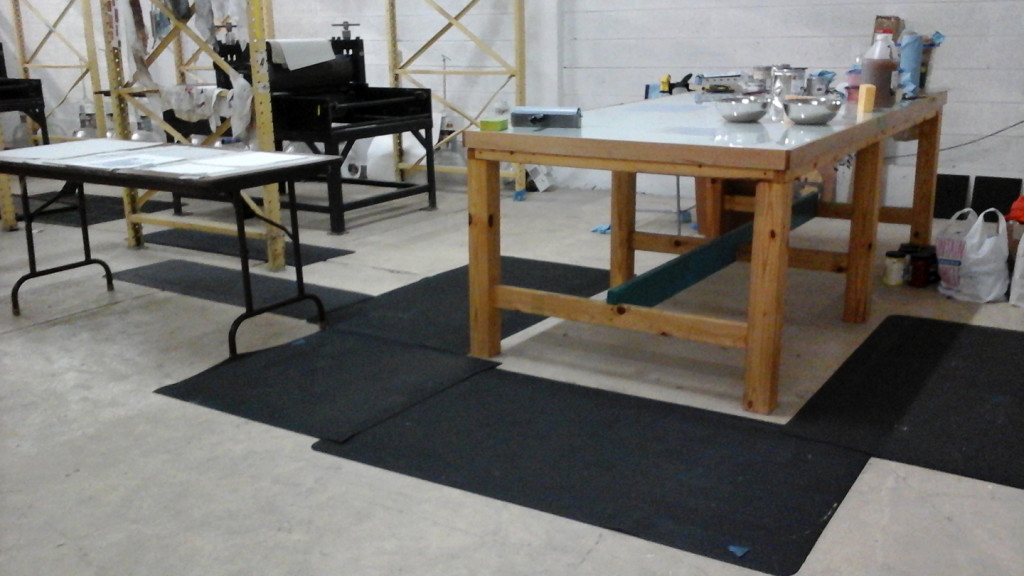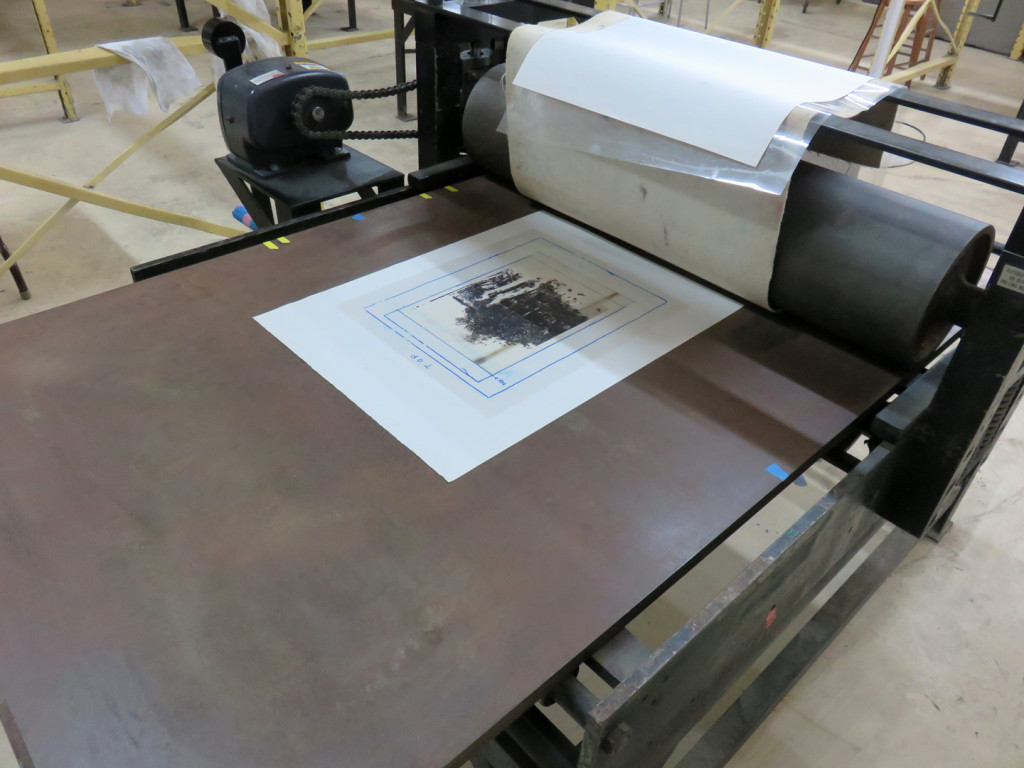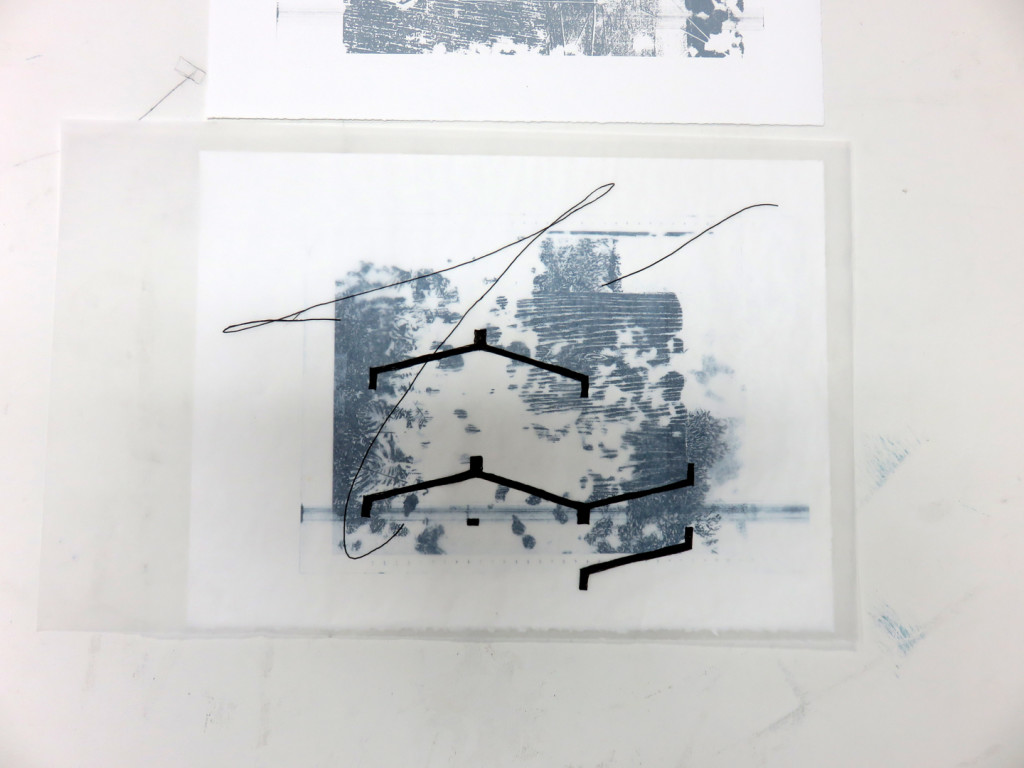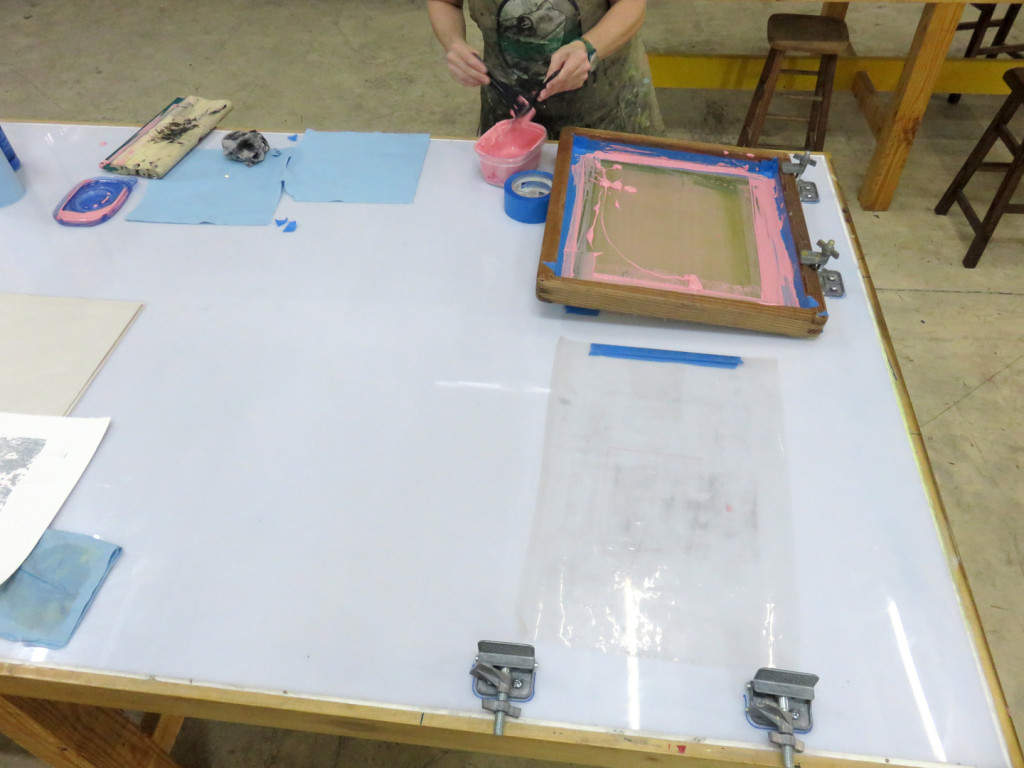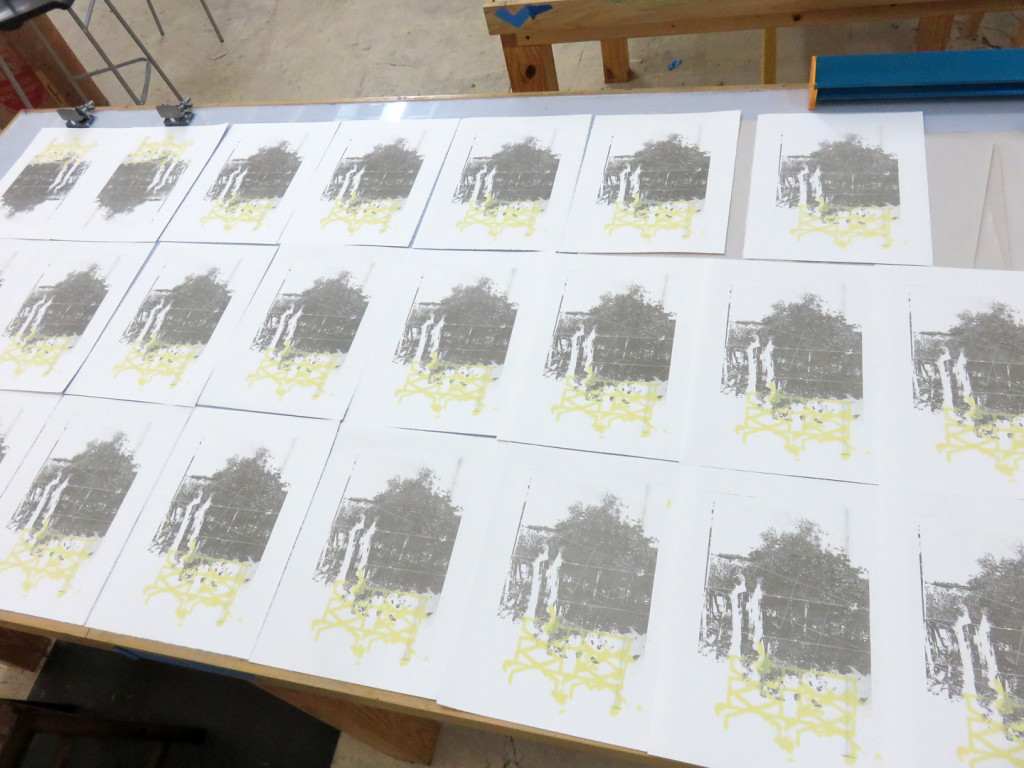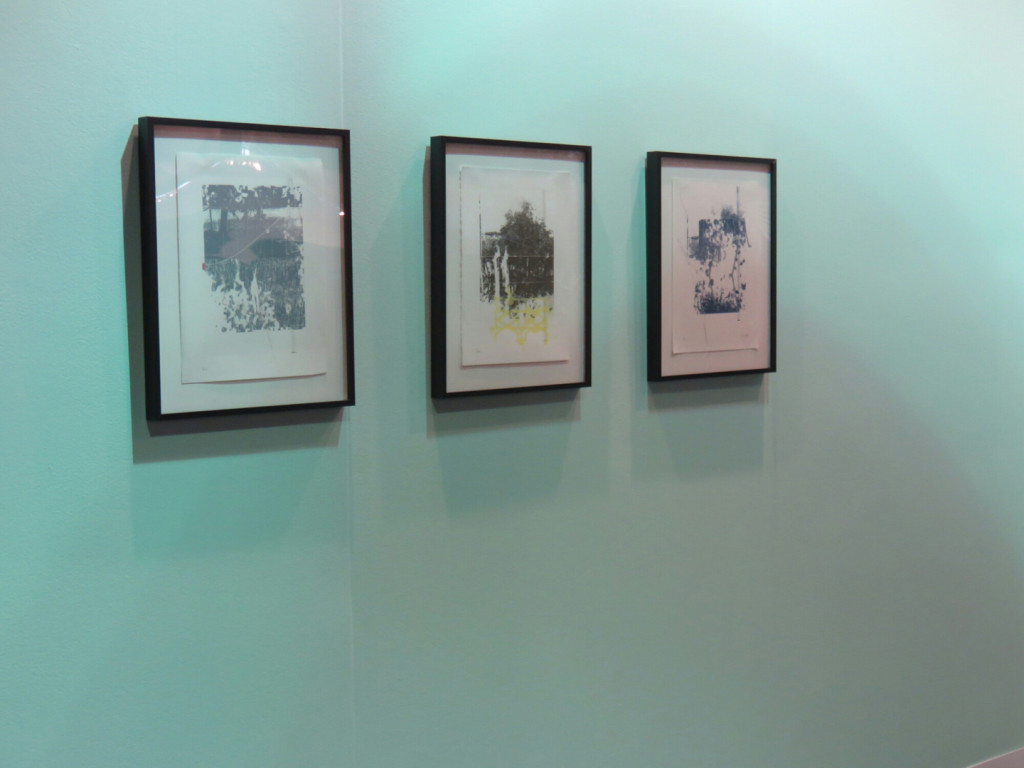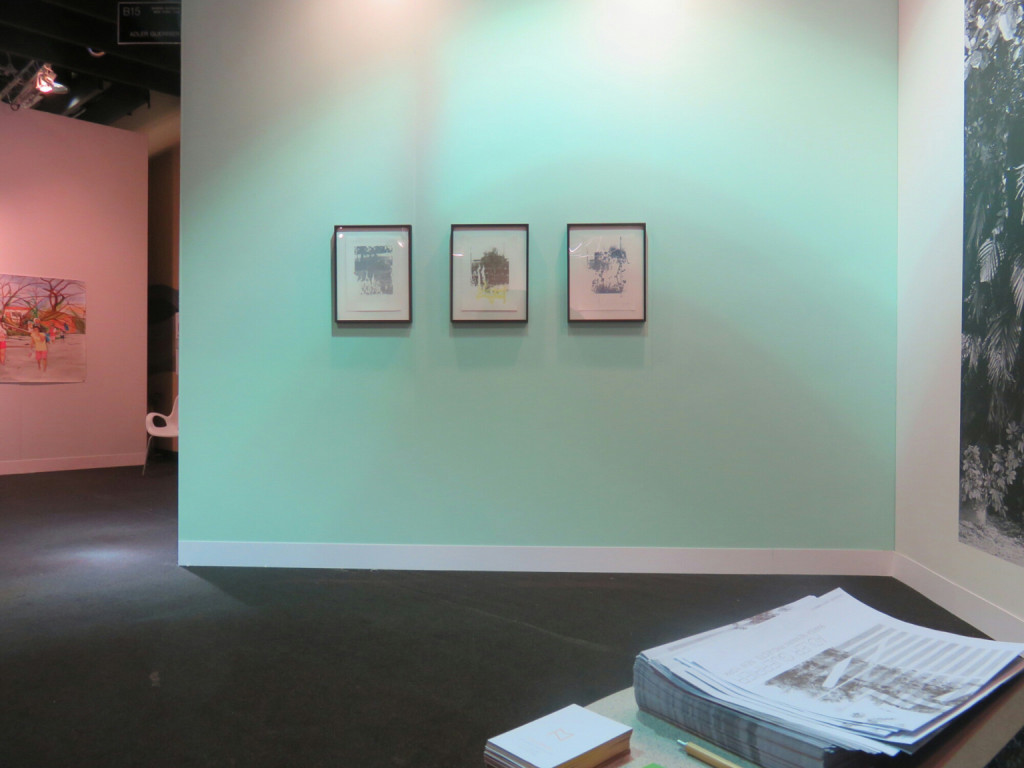Volta opened in New York today, and in booth B15, Marisa Newman Projects, you’ll find an installation of work by Adler Guerrier (full disclosure: my husband!) which includes a triptych of prints.
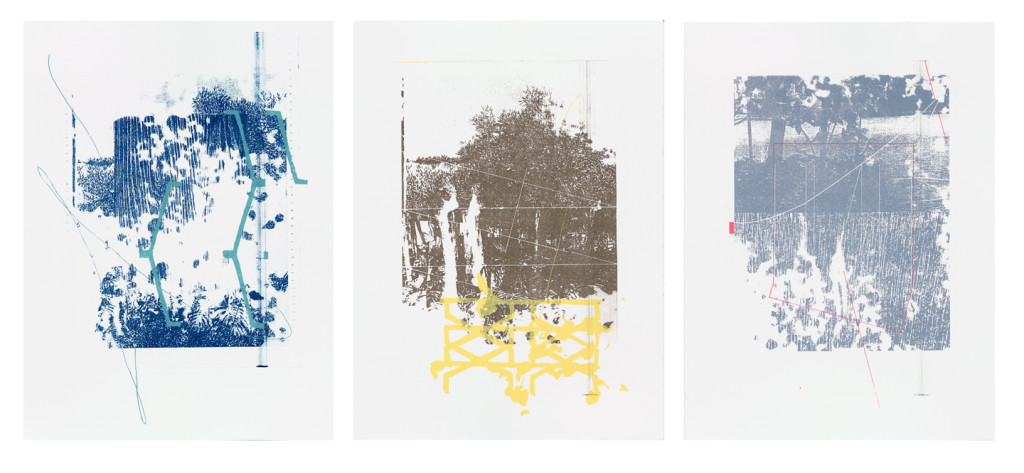 This triptych edition of 50 can better be understood from the printmaker’s perspective as three separate editions of 50, each with two runs–or 300 runs total (if you only count the good impressions).
This triptych edition of 50 can better be understood from the printmaker’s perspective as three separate editions of 50, each with two runs–or 300 runs total (if you only count the good impressions).
The base run is a polyester plate lithograph from a scanned solvent transfer, printed onto the plate from a laser printer. Adler uses solvent transfers frequently, and some funky artifacts from the initial copies that were used to make the transfers are still visible in the prints, which have their own artifacts from the janky laser printer that Adler and I used to print the litho plates. You can see the scanned solvent transfer images on his website, for comparison. [On the to-do list, by the way, is purchase a new laser printer for TBP expressly for polyester plate workshop use.]
Adler’s body of work for the past couple of years has used a color palette inspired by local flora and architecture; he gave me color samples that I had to match.
The litho ink had to be mixed somewhat in advance of printing, as I knew I would need to add mag (magnesium carbonate) to the inks to lessen the chance of the image filling in or scumming during printing; I think the polyester plates are more sensitive to the texture of mag that hasn’t sufficiently been absorbed into the ink mass than stones or ball-grained plates are, so I prefer to let the inks sit at least a day before using them.
In any case, whether the inks are oil-based or acrylic (as for screenprinting), it takes some time to get the color right, as you can see below. [The ink on black paper was for the Lubber Totes I printed for the MOA+D Bazaar Bar event, not for this project, though the rest of the tests were.]
To keep myself from getting confused by the numerous draw-downs, I name the colors once I get it right.
Polyester plate litho is printed just like stone–conceptually, at least. In practice, it can be more frustrating–things can go wrong that you don’t have as many at-press remedies for. So care taken before the plate ever makes it to the press is crucial. Plates can’t be touched, digital images either need to be half-toned or carefully adjusted for brightness and contrast, the plates need to be heat-set, inks need to be modified a bit differently, gum needs to be added to the water, and maybe a bit of mag as well.
Stones feel forgiving, generally, I think, but I have learned that polyester plate litho can be very predictable during printing; I even successfully closed a plate down with a gum-coat and printed with it again the following day with no image deterioration. This shouldn’t be news to other lithographers out there–I mean, I myself had read that it could be predictable, and that they could be used again over multiple printing sessions, but until this edition, I suppose that I hadn’t had them completely figured out.
I’m only able to print about four or five polyester plate impressions an hour, though; it’s part of the dance that balances the speed of the image rolling up against the chance that it will roll-up too quickly, and likely then fill-in. If you do the math on 150 polyester plate impressions, you’ll soon realize that Adler has priced this triptych at a steal, and that I’m on my feet for eons during printing. The latter explains my strong advocacy for anti-fatigue mats, which I set up in regional trails in the printshop according to my movements.
If I had a litho press at Turn-Based Press, I likely would have done the base run from a solvent transfer onto a stone (amusingly, I do have those!). Since I have etching presses instead, it had to be some form of plate lithography, preferably without pin-registration (it feels too cumbersome for me on etching presses).
Adler made a gif of me registering paper to one of the plates on the pressbed. It’s epically gigantic. You can see it here.
After the litho run was sufficiently dry, a run of fine, screenprinted marks was done on top. Adler developed the marks for the screenprinted run from the actual lithographs themselves, rather than from pre-planned imagery, in case of any possible mismatch between the work-as-executed and the planned images. He drew the positives with ink on tracing paper, and they were directly exposed to the coated screens.
I don’t think we took any images of the editions while screenprinting; it was so quick. Oh, well! Here’s one of me cleaning up.
It’s always satisfying to see a whole bunch of prints side by side.
However, it’s a completely different experience than seeing the triptych as a whole, framed, installed work.
If you’re up in NYC right now, go give them a personal look-see.
